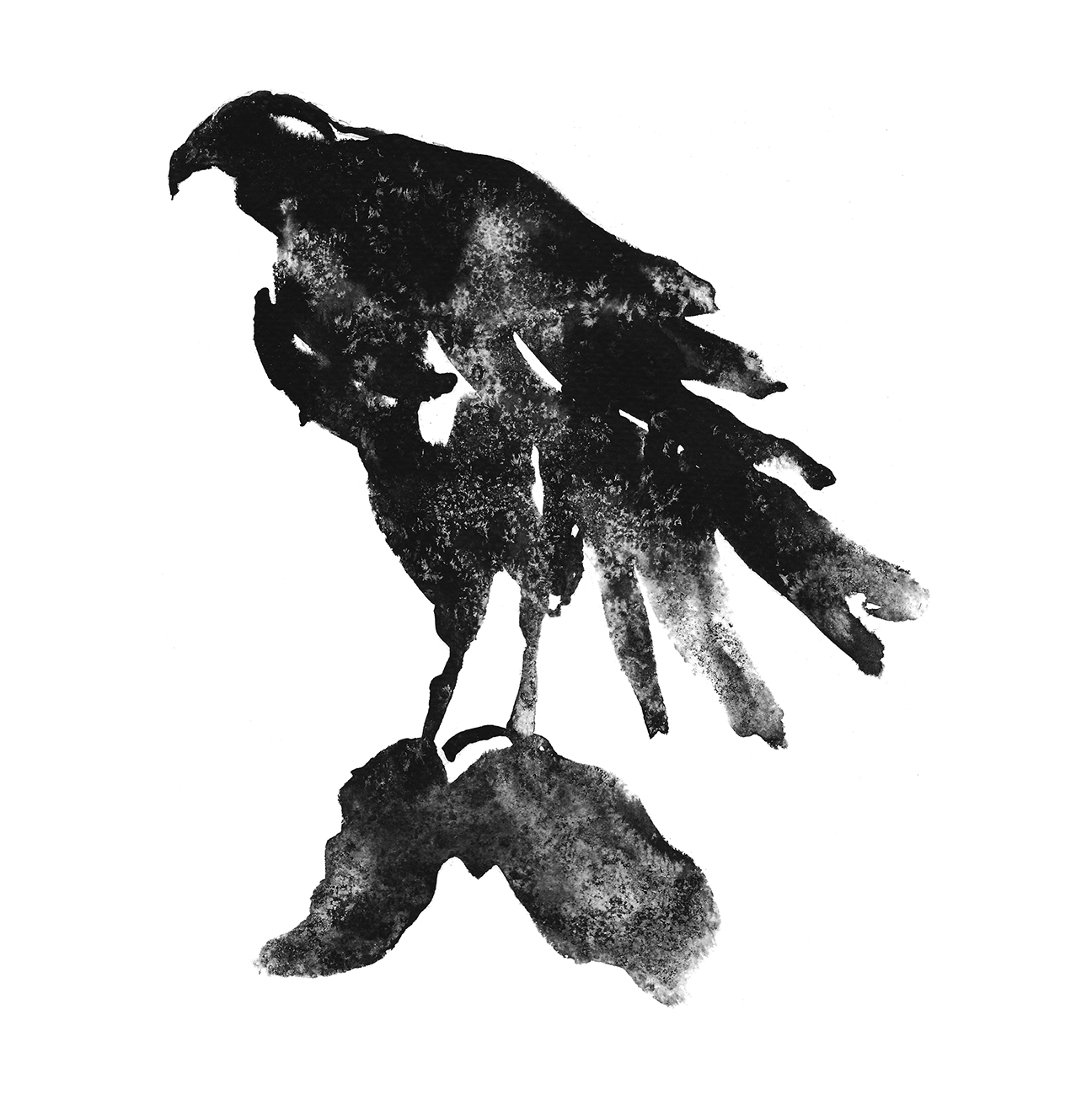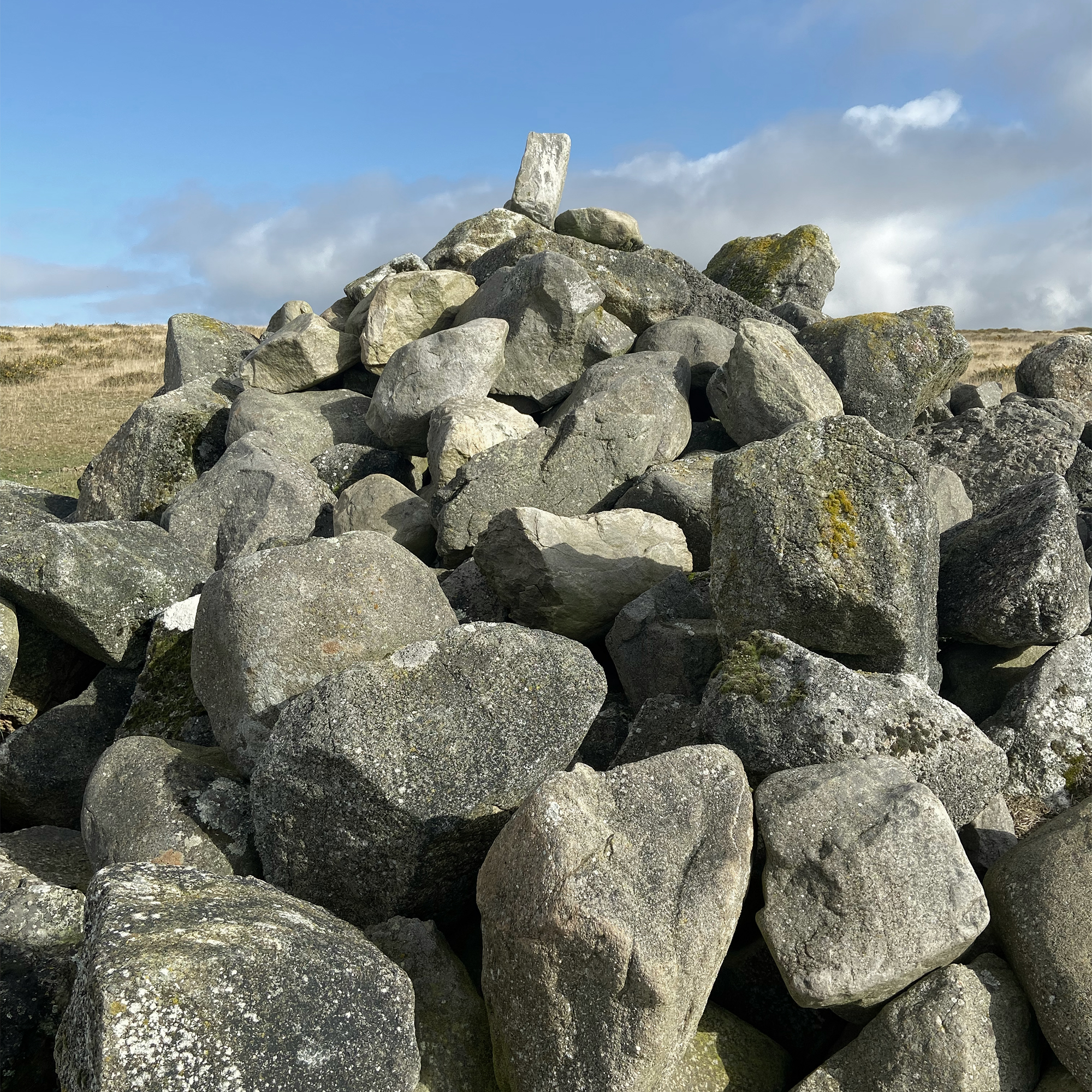The cloud is down. My navigation is reliant on the recall of shapes close up: twisted trees, broken walls, mawn pools, the bends and intersections in tracks. In the past week fieldfares have returned, I can hear them now, ransacking the rowans. A small flock of starlings appear and disappear. I flush a snipe and a dozen golden plovers, their calls like lights in the fog. Strange that the birds are so active today, perhaps they thought they had the place to themselves.
It is over to the west, sheltered in a fold in the hill. To get to it you have to walk over a thousand unmarked graves.
I’m walking above a trench that follows the contour of the hill for half a mile. On the county archaeological survey map this trench is identified as a quarry, but the local graziers say that it has never yielded any stone. It is long and deep enough to conceal a thousand men. The trench directly overlooks Painscastle a mile away on the valley floor, a Norman stronghold which was the scene of the most bloody battle in Welsh history. In the late 1198 the Welsh prince Gwenwynwyn captured the castle. The castle was then retaken by an army assembled by the Justiciar of England. All Welsh lives were lost. 3000 foot soldiers discarded their weapons and tried to flee the mounted English army. All were hunted down and killed. The place of the slaughter was presumed to have been the fields directly adjacent to the castle but a recent survey, including metal detection and Lidar scanning, found no evidence. Up here, a mile above the castle, is where local folk history says that the slaughter took place. An old grazier once walked me along the boundary of the mass grave that he says lies beneath this ground. No farmer has ever ploughed it. Until recently this place was littered with gravestones, some bearing 1000 year old inscriptions. The Welsh name for the adjacent farm is translated as The Place of the Dead.
My memory failed the morning I raced a battered Dawes bike down a steep lane. As the lane neared a T-Junction with a busy main road I started to pull on my brakes, but they didn’t respond. There were cars moving fast in both directions. I was heading straight for them. I veered to the side of the lane and hit a thick concrete sign post, went over the handlebars and hit my head on the sharp edge of the post. By the time I regained consciousness my eyes were shut from the swelling. Weeks of lying in a dark room followed while my skull knitted itself back together. I don’t remember a thing of my life before that event and I’ve retained very little since. Now I lose things easily, particularly words. I grope around for the names of my heroes, for the titles of my favourite books and films. I’ve only ever been able to memorise one poem. But I do remember places. The memory of a place resides outside the skull, somewhere close to the soles of your feet.
Place cells are found in the hippocampus. These neurones fire in patterns known as place fields which respond to locations and enable humans and animals to navigate and to remember places. On entering a location a unique pattern will fire within the cells creating a non-topographical map which then fires again when that place is remembered. These patterns are always hexagonal. This is one of the oldest evolutionary functions of the brain. The ability to navigate is the first thing that disappears with the onset of Alzheimer’s disease, years before other cognitive functions are compromised.
It was recently discovered that place cells also have a crucial function in the recall of episodic memories. The process operates in the same way as place fields, utilising hexagonal grids. Our memories are literally bonded to a place and stored as navigable maps inside us.
But memory does not always reside in the container of the brain. Mimosa Pudica is a plant native to Central and South America. It is known as the sensitive plant due to the strange way its leaves fold and droop when disturbed. The evolutionary ecologist Monica Gagliana created a a now well known experiment with these plants. She created an apparatus to repeatedly drop a Mimosa Pudica at fixed intervals. At first the leaves folded as expected, but after a few repetitions the leaves stopped reacting. The plant learned that being dropped was not a threat. A month later the plant was dropped again. The leaves still did not fold. The plant had memorised the event.
Over the unmarked graves, past dykes, burial cairns, round barrows.
Follow the lines of broken walls, each stone baring the memory of the hand that fetched and laid it.
Beneath the circling buzzards whose eyes hold the real maps of this land, at a scale of 1:1.
The chapel comes into view. It is one of the many chapels in this area that seem abandoned, the community it served almost gone. In the surrounding fields the platforms of ancient and now vanished houses can be seen. Only a single half-ruined farmhouse stands nearby, its roof protected from the weather by a taped-together collection of black bin sacks, torn and flapping in the wind. There is no lane to the chapel. You pass through a broken gate closed with a length of string, across two steeply sloping fields towards a beech wood which enfolds the churchyard as if in protection, the great silver and gold shapes of the trees towering over the twisted, infirm yews that lean against the walls of the chapel.
Today is the 100th anniversary of the end of the Great War. All across the country people are gathering. But not here. This community began to unravel in those terrible years, but it is now too far gone even for memories. The gravestones lean at acute angles bearing lichen and moss-coated inscriptions. They are like neurones that have ceased firing. Once they told stories of this place, now the best they can do is recall the disembodied names: Griffiths, Nicholls, Price. On the bank that borders the wood are little stones that mark the burials of children, rough, unshaped stoned fetched from the hill by families too poor to pay for a carved headstone.
There are cultures who believe that memories reside, along with dreams, in our surroundings. As we pass through they ripple like notes on a piano, they light up like a silver screen. Our memories play us. But they require a relay down the generations. They fall silent easily.
The chapel is cool, damp as river stones. At the end of each pew is a pole topped with a burned down candle, wax pooled like time stood still. Plaster crumbles from the walls, the windows are opaque with dust. I walk to the alter, a simple unadorned bench protected by a wooden rail. I take the tiny enamel poppy from my pocket and place it on the bench. I try to think of something to say but no words come. For a minute I stand, head bowed. As I leave the old door howls. Outside the beech trees are raining gold in a spear of sunlight. Dark rectangles stretch from the headstones like blankets. I cross the fields, tie the gate shut and head back up the hill, its memories sinking like leaf fall.

